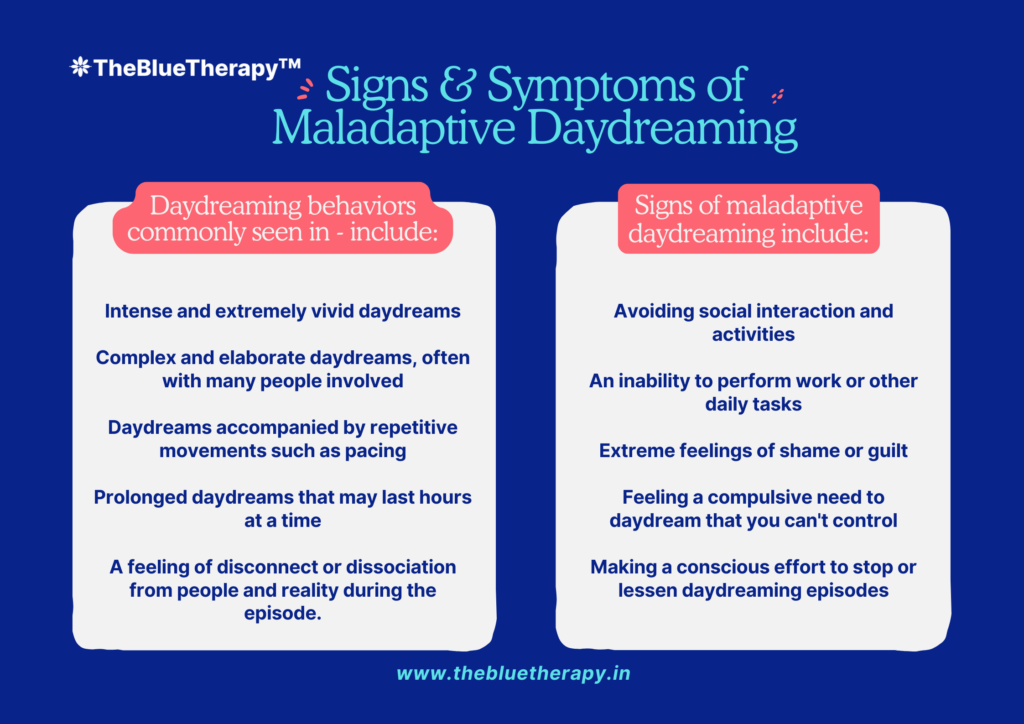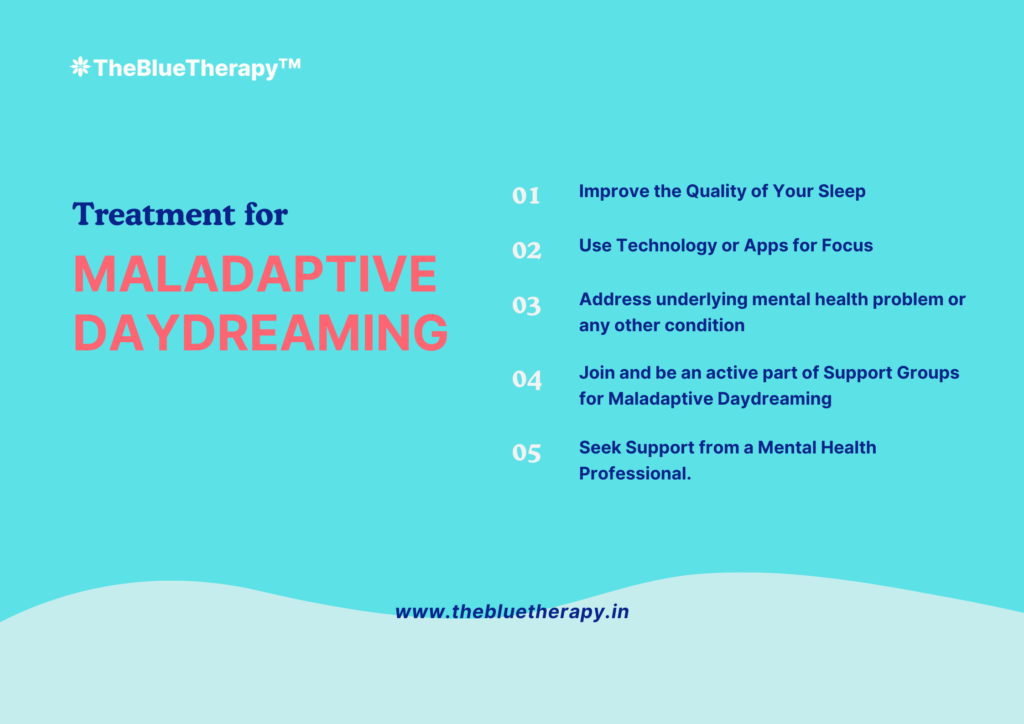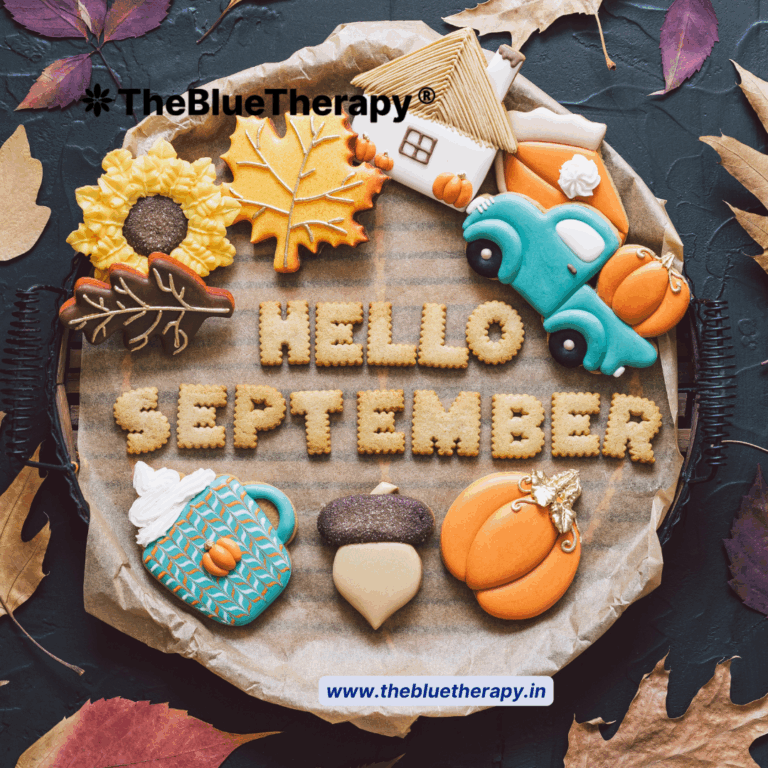Lost in a World of Your Own: Understanding Maladaptive Daydreaming
Introduction
Daydreaming is a common human experience. Time to time, we all escape into our minds, imagining different scenarios, crafting stories or even simply zoning out. Maybe more than once a day!
However, for some, daydreaming can become a compulsive and all-consuming habit, often interfering with daily life and causing them significant distress. This is called Maladaptive Daydreaming.
What is Maladaptive Daydreaming?
Maladaptive daydreaming is a behaviour where a person spends an excessive amount of time daydreaming, often becoming immersed in their imagination. This condition can be characterized by intense, vivid, and extended daydreams that replace real-life activities.
This means it’s difficult — if not impossible — to control that you’re doing it.
Maladaptive daydreaming is often a response of depression, anxiety, or deep-rooted trauma.
Signs and Symptoms of Maladaptive Daydreaming
Recognizing maladaptive daydreaming can sometimes be a challenge as all the symptoms revolve around daydreaming itself. The symptoms tend to fall under two categories: daydreaming behaviour and how a person feels about their daydreaming.

Daydreaming Behaviour
The kind of daydreams that happen with maladaptive daydreaming involve:
- Intensity: these daydreams are extremely vivid and detailed
- Desire: strong addiction to keep daydreaming especially during night time causing trouble sleeping
- Duration: can be done for long periods, even hours at a time
- Intent: individuals can often can and do start daydreaming intentionally
- Disconnection from reality: individuals with maladaptive daydreaming become emotionally and sometimes mentally disconnected from the world around them.
How does a person feel about their maladaptive daydreaming?
People who experience maladaptive daydreaming struggle with negative feelings and the effects of it.
- Social Isolation: avoiding social interactions to spend more time daydreaming
- Interference in work and other pursuits: struggling to concentrate on tasks or conversations
- Compulsive behaviours: engaging in repetitive actions or rituals to trigger daydreams
- Neglect of responsibilities: prioritizing daydreaming over work, school, or personal relationships
Impact of Maladaptive Daydreaming
Maladaptive daydreaming affects the mind. It can negatively impact relationships, work/school performance, sleep and daily life.
It has been researched that maladaptive daydreamers spend around 4 – 5 hours of their day zoned out by their daydreams. Due to the all-consuming and immersive nature of the daydreams, some people tend to neglect their relationships and responsibilities in the real world – leading to emotional distress.
Individuals who intentionally daydream are more likely to have troubled sleeping patterns. Poor sleep can result in sleep deprivation – impairs one’s ability to focus, concentrate, decision making and pay attention.
Some physical impacts of maladaptive daydreaming could be excessive fatigue and headaches. People experiencing maladaptive daydreaming may also have low self-esteem in real life; and also believe that their real life is more distressing than their fantasy world.
Difference Between Daydreaming and Maladaptive Daydreaming
The difference between daydreaming and maladaptive daydreaming lies in the intensity, frequency, and impact on one’s daily life. Daydreams are a normal part of existence. They’re usually pleasant, and can sometimes distract us from the task at hand too.
Research suggests that daydreaming helps in relieving boredom, sometimes finding meaning in one’s life’s story and also helps profoundly in boosting creativity.
Maladaptive daydreaming, too, can be pleasant towards the start, but since it often involves rich, vivid and detailed fantasies, a person can get lost in those daydreams and disconnect from the real world. Maladaptive daydreaming is often confused with schizophrenia too, however, those two conditions are very different.
Treatment for Maladaptive Daydreaming
There are no specific treatment methods for maladaptive daydreaming, but various therapeutic approaches and a few lifestyle modifications have been seen to help manage the symptoms and improve overall well-being.

Improve the quality of your sleep
Having a poor sleep schedule can increase fatigue and make it easier to slip into daydreaming. Set and follow a regular sleep schedule throughout the week, even the weekends.
- Start by establishing a relaxing and calming bedtime routine to create a restful sleeping environment.
- During the day, or while at work, schedule brief breaks to refresh the mind. This can help prevent excessive drifting into daydreams.
Use technology for focus
Technology and apps can sometimes be useful to our daily routine. Making use of it appropriately can help manage our daydreams.
- Apps like Pomodoro timers or habit trackers, which help in focusing better, can help manage time and reduce distractions leading to daydreaming.
- For some, specific genres of music, books, or even movies can fuel daydreaming. Identifying these and limiting exposure to these triggers may reduce the frequency of daydreams.
Addressing underlying or other mental health conditions
Maladaptive daydreaming has usually been a sub-condition for another mental health condition.
- Treating any co-occurring mental health condition can also reduce maladaptive daydreaming.
- Seeking therapy or psychiatric medication for these co-occurring conditions can alleviate the emotional stress that drives excessive daydreaming.
Support groups
- Sharing experiences with others who have similar conditions can provide emotional support and additional coping strategies.
Seeking therapeutic support
A therapist can help you process any underlying trauma and perhaps identify what’s triggering your maladaptive daydreaming.
- They can use techniques from several therapeutic modalities to identify and reduce excessive daydreaming.
- They can also provide recommendations for controlling your tendency to daydream and provide useful tips for better focus and improving sleep.
Conclusion
Maladaptive Daydreaming involves highly structured and detailed daydreams that sometimes can be difficult to manage. It is a mental health issue that causes an individual to lose themselves in complex daydreams. These daydreams might be a coping mechanism for other underlying mental health conditions.
Daydreaming isn’t always a bad thing, and it certainly isn’t always harmful. It’s rather important to be aware of what you daydream about and its frequency and intensity. If daydreams occur to you often – and it becomes difficult for you to function in your daily routine – seeking help from a mental health therapist is essential.
It’s possible to learn to manage these daydreams – especially with a mental health professional and being self-aware – so you can focus your efforts and attention on living and building relationships with people in your real surroundings.


